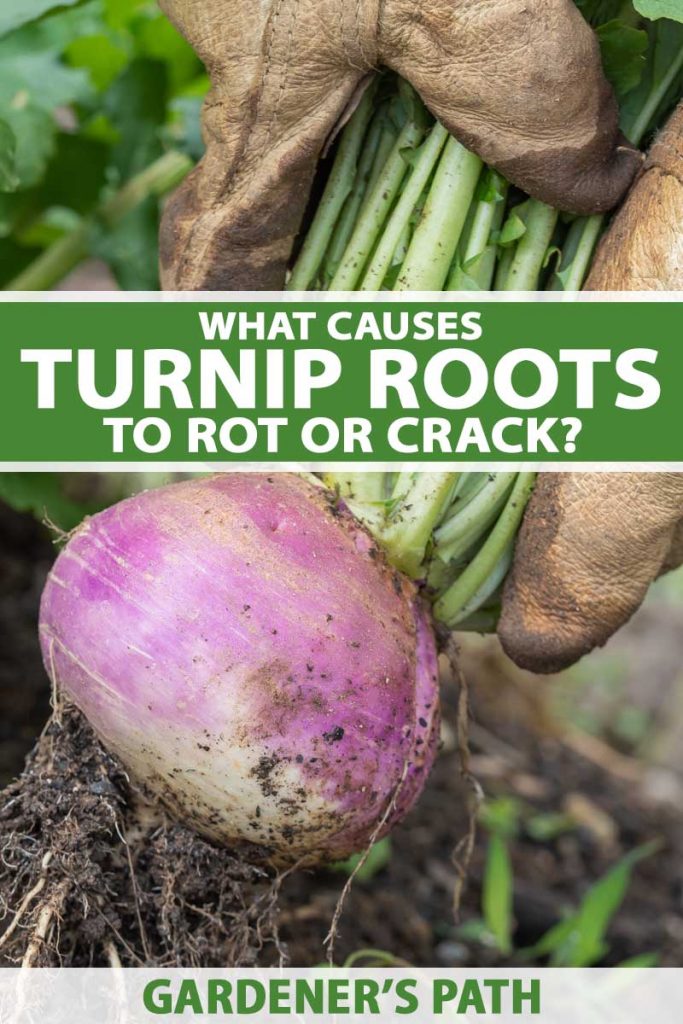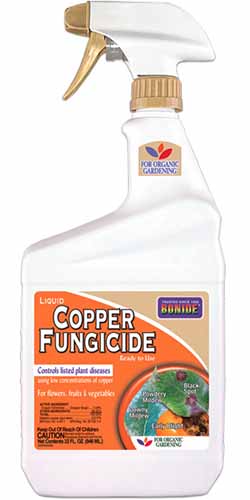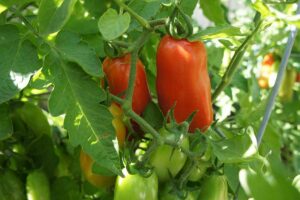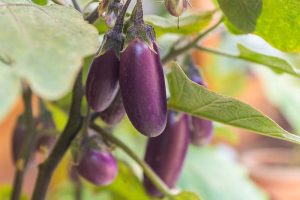It’s heartbreaking when your turnip plants look perfectly healthy above ground, but underground, something sinister is happening.
You have an image in your mind of the picture-perfect roots that you’re about to dig up, after all those weeks of working and waiting.
You can already imagine the earthy aroma as you pull the roasted vegetables out of the oven.
But when you lift your prize out of the ground, the darn things are split or rotting!
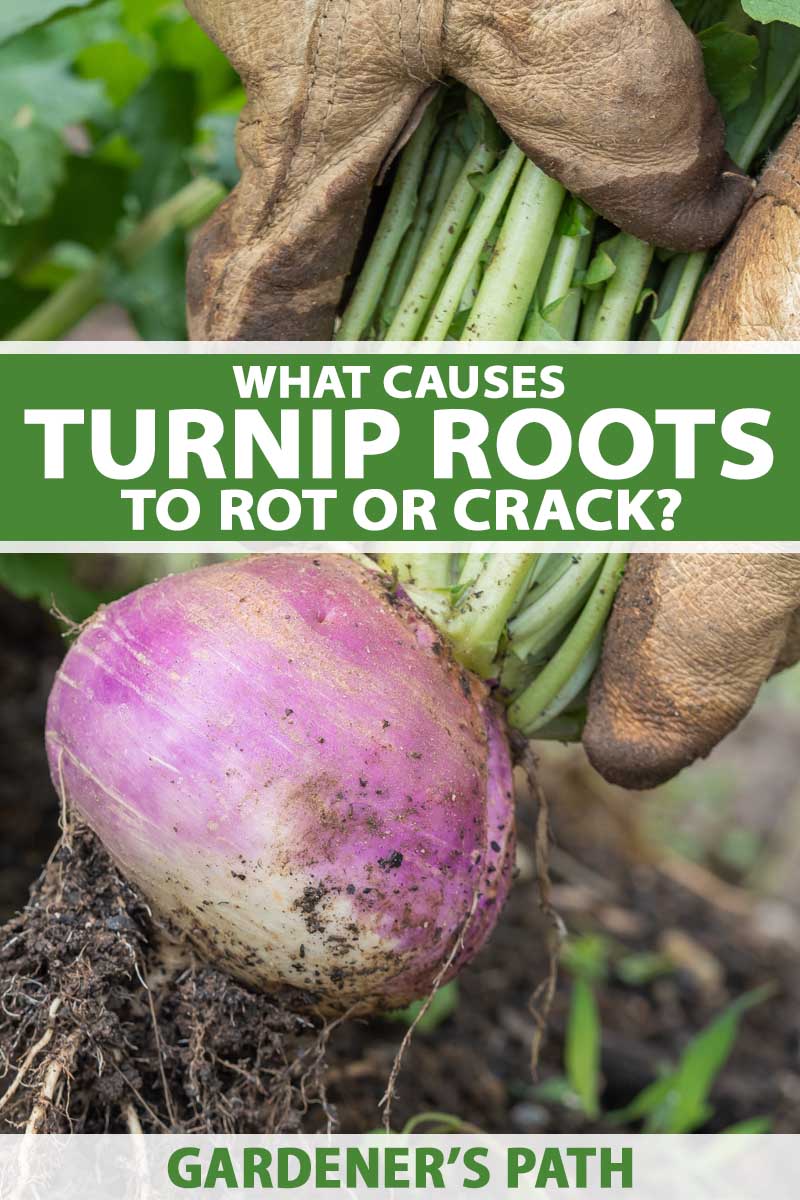
We link to vendors to help you find relevant products. If you buy from one of our links, we may earn a commission.
What went wrong?
Turnips can crack, split, or rot for many reasons, from disease to problems with irrigation or nutrition issues.
In some cases, if you’re lucky, you’ll notice some indication above ground that something is amiss, and you can take steps to remedy it before harvest.
Other times, all will appear well when you look at the leaves and stems, and you won’t know that bad things are happening underground until it’s too late.
This guide will arm you with the knowledge of what to look for and how to prevent many potential issues that can cause problems with your crop.
Here’s what we’ll address:
What You’ll Learn
A Short Tutorial on Turnips
Before we jump in, keep this in mind:
If you keep your plants evenly watered, make sure they have adequate air circulation, and observe good gardening practices like testing your soil and rotating your crops, this will go a long way toward avoiding all of the issues we’ll be discussing.

How’s that for motivation for being a responsible gardener?
If you haven’t read our guide to growing turnips yet, now is an excellent time to check it out.
Here’s a quick rundown of the basics:
Turnips, Brassica rapa subsp. rapa, are suitable for growing in gardens in USDA Hardiness Zones 2-9. They prefer cool weather, which is why they’re usually grown in the spring or fall, or as a winter crop in warmer areas.
These root crops need well-draining, loose, nutrient-rich soil to thrive. They also require consistent, even moisture.
If you leave your turnips in the ground too long, you leave them open to various risks that could result in cracking, so pull them as soon as they’re ready.
Harvest time will vary, depending on the variety you’re growing, but most cultivars mature in 30 to 60 days.
Check your seed packet and make a note in your gardening journal of the expected harvest date.
Why Your Turnips Are Cracking
First up, we’ll cover various diseases that can cause problems with your harvest.
Next, we’ll address environmental conditions and improper gardening practices that can cause physiological problems in your crop like cracking, splitting, and rotting.
Disease
Several diseases can cause your turnip harvest to crack and rot.
Whether fungal or bacterial, or caused by water molds, prevention is your best bet to keep these problems out of your veggie patch.
You can learn more about the common diseases that affect turnip crops in this guide.
Anthracnose
Anthracnose is a disease caused by the fungus Colletotrichum higginsianum. The good news is that you can usually see the disease progressing on the leaves of your turnip plants before it causes damage to the roots.
It first appears as small, circular lesions on the foliage that look dry and brown. Later, similar lesions start forming underground on the roots as well.
When you pull them up, the roots will have dry, sunken areas that are discolored and cracked.
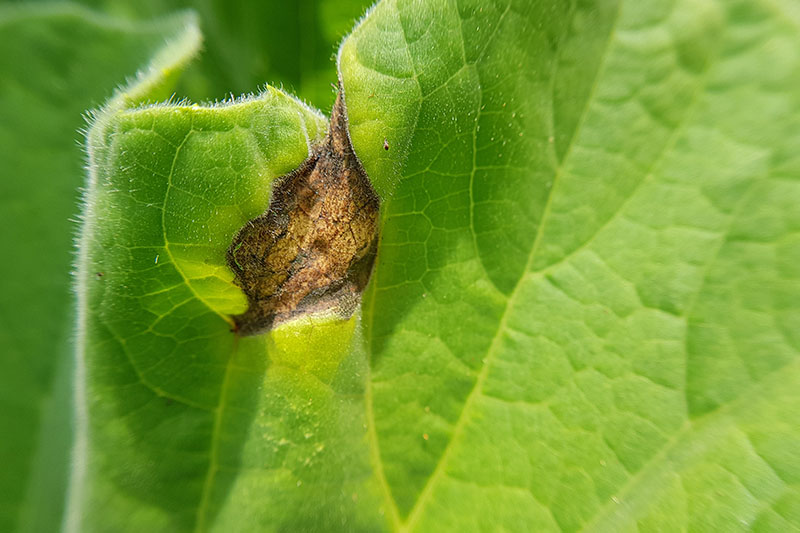
This disease spreads in warm, moist weather, so it’s usually more of a problem for spring growers, or early in the fall planting season. It may be spread through infected seed, weeds, and garden debris.
To prevent this disease, be sure to purchase disease-free seed from a reputable source, water only at the base of plants, and keep the garden free of weeds and plant debris.
Proper spacing also goes a long way towards prevention. If necessary, trim some of the leaves from each plant to improve air circulation.
You don’t need to take a lot, just a few so they aren’t crowded. Don’t worry, a bit of pruning won’t impact your harvest, and turnip greens are delicious and nutritious!
If you catch an infection quickly, you can treat Anthracnose with a copper fungicide like this one from Bonide, which you can find at Arbico Organics.
Spray the plant’s leaves every week until harvest time.
Don’t spray the day before you plan to harvest if you intend to eat the leaves, and never mix copper fungicides with other products.
Bacterial Soft Rot
Bacterial soft rot is caused by Pectobacterium carotovorum subsp. carotovorum bacteria.
If it infects the roots, it will cause mushy, water-soaked spots to form on your crops, rendering them inedible. Yuck!
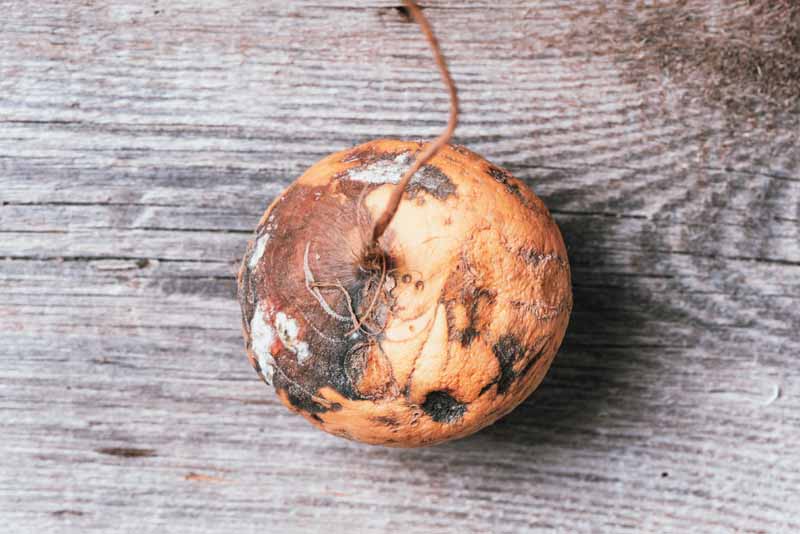
How do you know if your turnips are infected with soft rot? You’ll notice the leaves and stems starting to appear water-soaked and turning mushy, and the rotting spots will usually smell bad.
Should I get a little more specific? Unsurprisingly, the foliage will smell like rotting vegetables that you’ve left in your refrigerator’s back corner for far too long.
The bacteria can survive in the soil and on plant debris, making it hard to control this disease once it sets in, and there’s no effective treatment for it.
To prevent a recurrence in future crops, maintain good air circulation by spacing seeds or transplants as recommended, and pruning away some of the foliage as needed, as described above.
Irrigate at the ground level rather than sprinkling the foliage, and clean your tools with a 1:10 mixture of bleach and water in between uses.
If you notice symptoms of this disease, pull the plants and destroy them. Don’t plant anything in the Brassica family in that area for at least three years.
Black Rot
Black rot is a serious disease caused by the bacterium Xanthomonas campestris subsp. campestris. If the name alone doesn’t strike fear into your heart, just wait: there’s more.
Black rot spreads incredibly easily, and the bacteria that cause it can survive for years on buried plant material. By the time you realize your plants have it, they could already be toast.
If your plants are infected, as the name suggests, this disease can cause your turnips to rot away underground, and you won’t get to enjoy any of the fruits of your labor.
To learn how to identify, prevent, and deal with this problem, check out our complete guide to turnip black rot.
Downy Mildew
Downy mildew loves the type of environmental conditions that are common in many areas in the fall, which also happens to be an ideal time to grow turnips.
When moisture levels are high and the weather is cool, that’s when Peronspora parastica, the water mold or oomycete that causes this disease, can take hold.
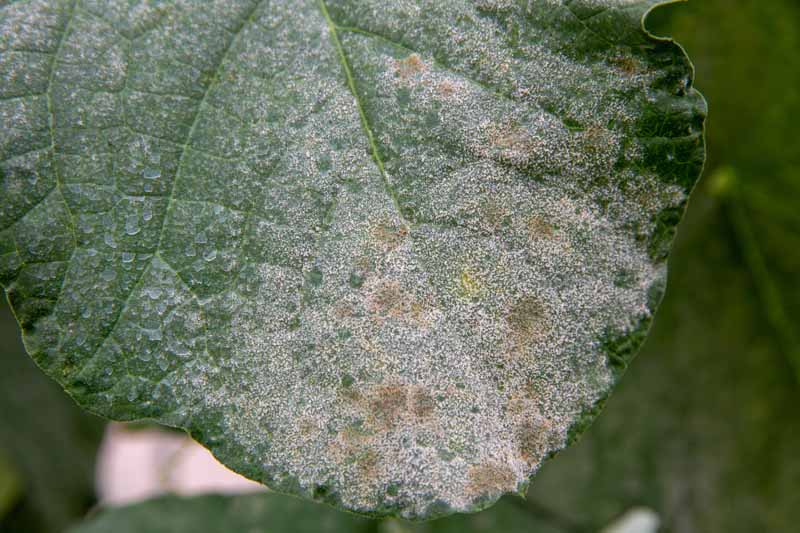
Symptoms usually start on the lower leaves, where you’ll see yellow spots that may turn brown and expand. Later, you’ll observe “downy” white moldy mats on the foliage. Eventually, the affected leaves will wither and die back.
In severe cases, the disease can spread to the crown and infect the roots, causing them to turn brown or black and develop cracks.
Sometimes, you may not even notice that your harvest is infected until the roots deteriorate in storage.
On the plus side, it’s relatively easy to deal with this disease.
Since you can see the symptoms above ground, as long as you provide your crops with attentive care, you may be able to nip this disease in the bud before it progresses to the point where it causes your roots to crack.
Prevention methods include keeping your garden weed-free and watering at the soil level rather than overhead. You can also spray plants with a 50:50 mix of milk and water if weather conditions that this pathogen prefers are in the forecast.

If you spot symptoms, take action quickly, before it spreads to the roots. Bonide Fung-onil is a good foliar spray option, and you can find it on Amazon.
Planting your turnips in the spring and avoiding the fall altogether, if this option is available to you, can also help to ensure that you won’t have to worry about downy mildew being a problem.
You can learn more about how to identify and treat downy mildew in this guide.
Physiological Ailments and Other Issues
Some issues that may lead to problems with your harvest are not caused by bacteria, fungi, or oomycetes.
Rather, soil conditions, severe weather, or improper gardening practices may be at play.
Brown Heart/Hollow Heart
A boron deficiency isn’t as common in the garden as some other issues you might come across, but if your soil is overly acidic or alkaline, sandy with insufficient amendments of organic matter, or overly dry, this may be the culprit.
While the foliage above ground will often appear healthy, it may sometimes be stunted or thick, or leaves may turn yellow or appear otherwise discolored.
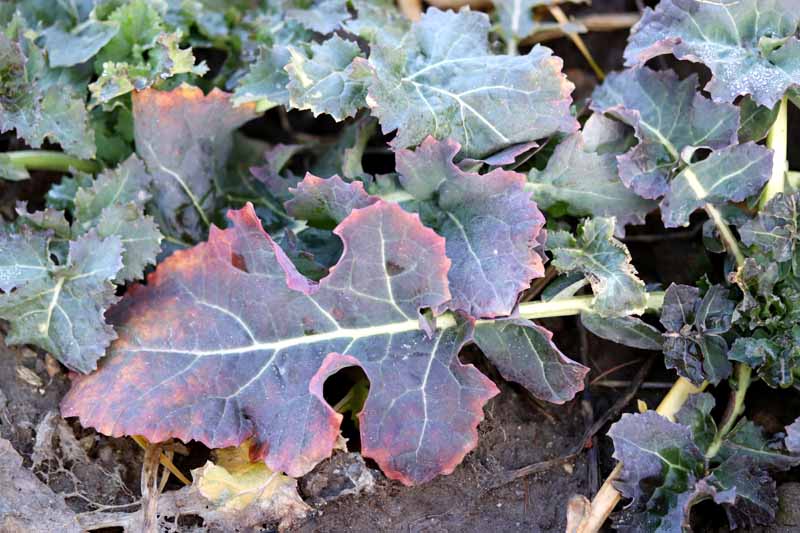
Cracking and rotting in this case typically occurs internally, and this condition is also known as hollow heart. You probably won’t notice it until after you’ve pulled up your turnips and started prepping them in the kitchen.
A different manifestation of symptoms of this physiological disorder – known as brown heart – may cause roots to develop firm water-soaked patches that eventually split, and roots may turn brown and become pulpy, or they may be hollow inside.
The roots can still be eaten if you’re able to cut away damaged portions after harvest, but they won’t store well.
It’s always a good idea to test your soil before planting as a preventative measure. Trust me, it goes a long way toward heading off all sorts of problems.
If the results of a test indicate that your soil is deficient in boron, you can add Borax to the soil before planting.

Also known as sodium borate, Borax is available on Amazon.
Mix one tablespoon of Borax with a gallon of water and spread one ounce around each square foot of the soil surface.
Though some gardeners may recommend supplementing the planting area with Borax at the first sign of symptoms (if you notice any in advance of harvest), this nutrient deficiency is similar to blossom-end rot in tomatoes, in which a deficiency of calcium causes damage to the fruit – prevention by amending the soil as needed in advance is recommended, and supplementing later probably won’t work to save your crop.
Keep in mind that a boron deficiency often goes hand in hand with excessive nitrogen. Boron can be rendered less available to plants when macronutrient levels in the soil are out of balance.
Excessive Heat
Some may like it hot, but turnips do not. If the air temperatures start to crawl above 75°F, you run the risk of harvesting roots that have become woody and cracked.
While hot weather may lead to stunted growth and a woody texture in your roots, it may also cause them to grow unusually fast, which can lead to cracking.
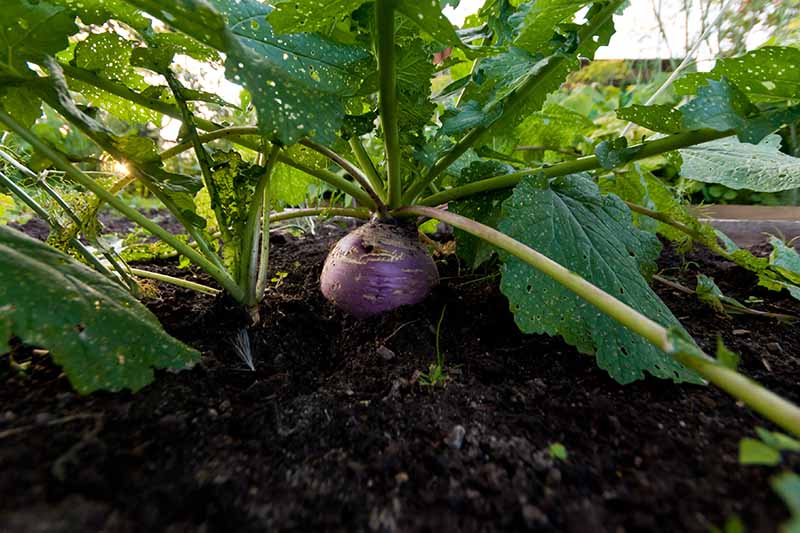
Beyond the weather itself, a failure to carefully attend to the needs of your crops may lead to cracking.
Following up a heatwave by pouring on the water can cause the roots to take up too much too quickly, and they crack or split as a result (see more on this below in the section on Water Problems).
There isn’t a lot you can do to control the weather. But you can protect your plants, and provide supplemental irrigation.
If you have a brief warm spell, try putting a shade cloth over your plants to keep the temperature down a little. Mulching around your plants can also help to protect them from the heat and retain moisture in the soil.
Watering deeply and consistently is key to growing healthy root crops. Don’t wait to water until the soil is completely dried out, and keep an eye on the weather forecast so you can anticipate your plants’ needs.
If you’re planting your crop in the fall and you regularly run into warmer than expected temperatures early in the season, try starting your plants indoors next year, and wait to transplant them outside until summer has officially sung its last hurrah.
As a root crop, transplanting turnips isn’t ideal. But neither are woody and cracked roots.
It might be worth the risk to transplant them as seedlings rather than planting seeds directly in the ground.
To make the transition easier, plant seedlings indoors in peat pots and harden them off for at least a week before transplanting them out into the garden, right in their biodegradable containers.
Water Problems
This is, by far, the most common reason for cracked roots.
Just as they might incur damage if they’re too hot and dry, if turnip plants get a sudden surge of water thanks to a springtime downpour or strong autumn storm, they’re likely to take up this water too quickly, which can lead to cracking.

It’s not such a problem if your plants have been evenly watered and then they get hit by a hard rain. But if your turnips have gone through a bit of a dry spell and then they’re suddenly flooded, this may cause them to crack.
The best practice here is to keep your turnips moist but not waterlogged, and avoid letting the soil dry out. They need regular, consistent water, and the soil should always feel like a well-wrung out sponge.
All Is Not Lost!
A cracked turnip isn’t necessarily inedible. Use your judgment, but if the root looks otherwise fine, go ahead and dig in.
However, if you see any mold or rot, it’s probably best to toss it out.

The next step is to take a deep breath and don’t let yourself become discouraged! Problems hit every gardener now and then. You’re working with living organisms, and everything isn’t to go right all the time.
If you’ve encountered problems with cracked roots, please share your questions and stories in the comments below. We’d love to hear what you discovered, and what worked for you!
If you want to learn more about growing turnips in your garden, check out these guides next:
